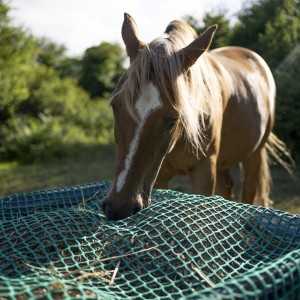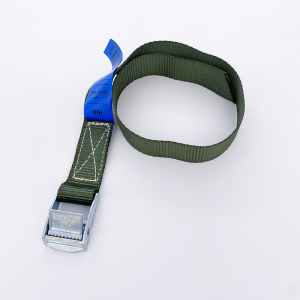
Hay net - Bag

Hay net - Rectangular

Hay net - Round bales

Custom-made hay net - Rectangular

Custom-made hay net - Round

Custom-made hay net - Bag


Custom-made hay net - Square bales


Polypropylene braid – Braided core

Shock cord - Elastic bungee cable

Stainless steel carabiner with plate - For net

Webbing cam buckle strap

Snap hook - Galvanised steel


Cast snap hook - Stainless steel

Wire eye strap - Stainless steel


Wall mount D-ring with bracket


Single pulley
We answer you
The smaller the mesh, the slower the hay is taken in.
| Mesh size (outer) | Purpose | |
| 100 mm | Very large mes | Limit hay waste, familiarisation with the net |
| 60 mm | Large mesh | Consumption slows down, transition to slow feeding |
| 45 mm | Small mesh | Introduction to slow feeding |
| 35 mm | Very small mesh | Slow feeding intensification |
| Note: The size expressed is that of the outer mesh. To calculate the inner mesh, you must subtract 10mm. | ||
The slow down of ingestion also depends on the level of hay compression and the length of the stalks.
For the same mesh, the distribution of hay will be different in a bag net and a round ball net.
- In a net bag, usually hay is loose
- In a round ball net, hay is compressed
- Hay compaction: hay compressed in a haystack will be harder to catch than hay loose in a bag
- Length of the strands: hay with short strand is more difficult to catch than hay with long strand
Tips :
- If your horses cannot all eat with the mesh installed, you can arrange several different mesh nets.
- Our bag nets are also available in double mesh with different size of mesh on each side.
If this is the first time you have put hay in a net and your horse is not used to it, he may be frustrated and can get angry. We advise you to gently accustom your horse to limit his frustration.
- Ruffle the hay out of the tufts of the mesh and leave some loose hay next to the nets.
- Choose a wide mesh net (60mm, 100mm) to promote a smooth transition.
Despite all the care taken in manufacturing, the net is a textile product that can be damaged by installation or use.
To repair the hole of your hay net, you can sew your stitches with a sharp needle of 1mm maximum and linen string of 0.3mm.
You can order a custom-made hay net directly from our website. All of our custom-made hay nets are available online.
Simply select the net of your choice, indicate your mesh and dimensions and the price will be displayed automatically!

